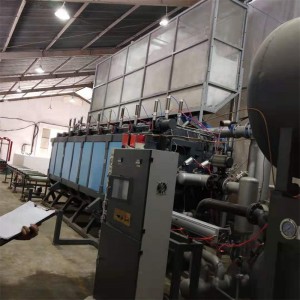Importance of Cutting Speed in Foam Cutting
In the field of EPS foam cutting, the speed at which a machine operates significantly impacts the overall performance and quality of the output. Understanding the dynamics of cutting speed allows manufacturers, suppliers, and wholesalers to optimize their processes for efficiency and quality. This article delves into the nuanced role of cutting speed in EPS foam cutting, emphasizing its critical importance in industrial applications.
The Role of Cutting Speed in Surface Finish
Effects on Surface Texture
The surface finish of cut EPS foam is directly influenced by the machine's cutting speed. Lower speeds allow the cutting tool more interaction time with the material, resulting in smoother and more polished surfaces. This is particularly crucial for high-end applications like automotive interiors, where aesthetics are paramount.
Trade-Offs at Higher Speeds
Conversely, higher speeds may yield rougher finishes due to rapid tool movement, causing minor tearing or irregularities in the foam. While this is sometimes acceptable in applications with further processing, it necessitates careful speed adjustment to maintain cut quality.
Precision Cutting: Balancing Speed and Accuracy
Maintaining Dimensional Accuracy
Precision is a core requirement in sectors like aerospace and medical device manufacturing. Lower cutting speeds enhance accuracy, allowing cutting tools to meticulously follow complex paths and adhere to tight tolerances, which are crucial for parts that need to fit precisely.
Challenges with High-Speed Cutting
At elevated speeds, deviation from intended cutting paths is more likely, potentially compromising part fit and functionality. Thus, finding the sweet spot for cutting speed is essential to balance precision and operational efficiency.
Heat Generation: Effects of Higher Cutting Speeds
Thermal Impact on Materials
Increased cutting speeds can lead to excessive heat generation, affecting both the foam and the cutting tool. Higher temperatures can melt or deform the foam, compromising the structural integrity of the cut.
Tool Longevity and Cost Implications
Excessive heat can also shorten tool lifespan, increasing operational costs for manufacturers and suppliers who need to replace cutting tools more frequently, impacting wholesale pricing strategies.
Cutting Speed and Material Integrity
Maintaining the structural integrity of EPS foam during cutting is vital, especially for insulation and cushioning applications. Rapid tool movement at high speeds can compress or deform the foam, altering its properties and reducing effectiveness.
Optimizing Cutting Speed for Different Foam Types
EPS vs. XPS
The optimal cutting speed varies with foam type due to different melting points and structural characteristics. EPS typically allows for faster cutting compared to XPS, which may require slower speeds to prevent melting and achieve a clean cut.
Industry-Specific Adjustments
Tailoring speed settings based on the specific type of foam material, thickness, and application needs ensures better performance, meeting diverse industry requirements from construction to packaging.
Economic Implications of Cutting Speed
Operational Efficiency and Cost
Balance between speed and quality impacts operational costs. Efficient cutting speeds reduce production time, saving energy and labor costs. However, the choice of speed must not compromise the quality, affecting the economic viability for manufacturers.
Impact on Wholesale Prices
Adjustments in cutting speed can influence production outputs and, consequently, wholesale prices. Suppliers aiming for competitive pricing must optimize cutting speeds to ensure cost-effective production without sacrificing quality.
Technological Advances in Foam Cutting Machines
Modern EPS cutting machines incorporate advanced technologies that allow for more precise control of cutting speed. These innovations provide manufacturers and suppliers with the tools needed to achieve higher efficiency and superior cut quality.
Application-Specific Speed Requirements
Customized Cutting for Varied Industries
Each industry has unique requirements for EPS foam cutting. For instance, the construction industry demands precise cuts for insulation boards, whereas the packaging industry focuses on efficiency for high-volume production. Adjusting the cutting speed to meet these needs ensures quality across applications.
Best Practices for Enhancing Cutting Performance
- Regularly calibrate machines to ensure optimal performance across different speeds.
- Utilize cooling systems or lubricants to manage heat generation and extend tool life.
- Conduct periodic reviews of cutting parameters, adjusting for specific material properties and industry standards.
Dongshen Provide Solutions
For manufacturers, suppliers, and wholesalers in the EPS foam cutting industry, Dongshen offers comprehensive solutions tailored to optimize cutting speeds for various applications. By providing state-of-the-art machines and technical guidance, Dongshen ensures enhanced performance, efficiency, and product quality. Our solutions include machine calibration services, training in best practices, and support for heat management techniques. Partner with Dongshen to achieve superior cutting results and maintain a competitive edge in the market.
User hot search: Eps Foam Cutting Machine
